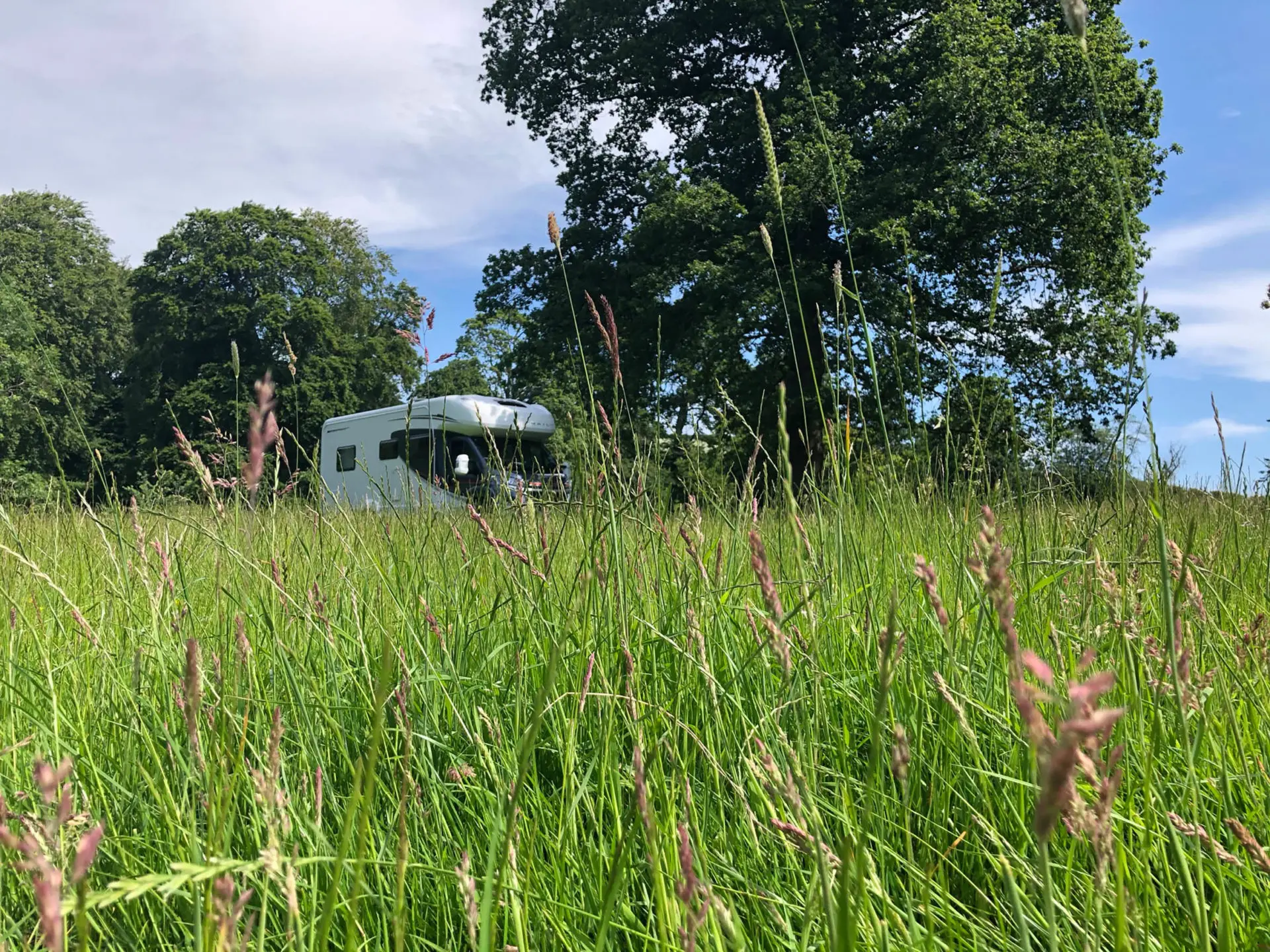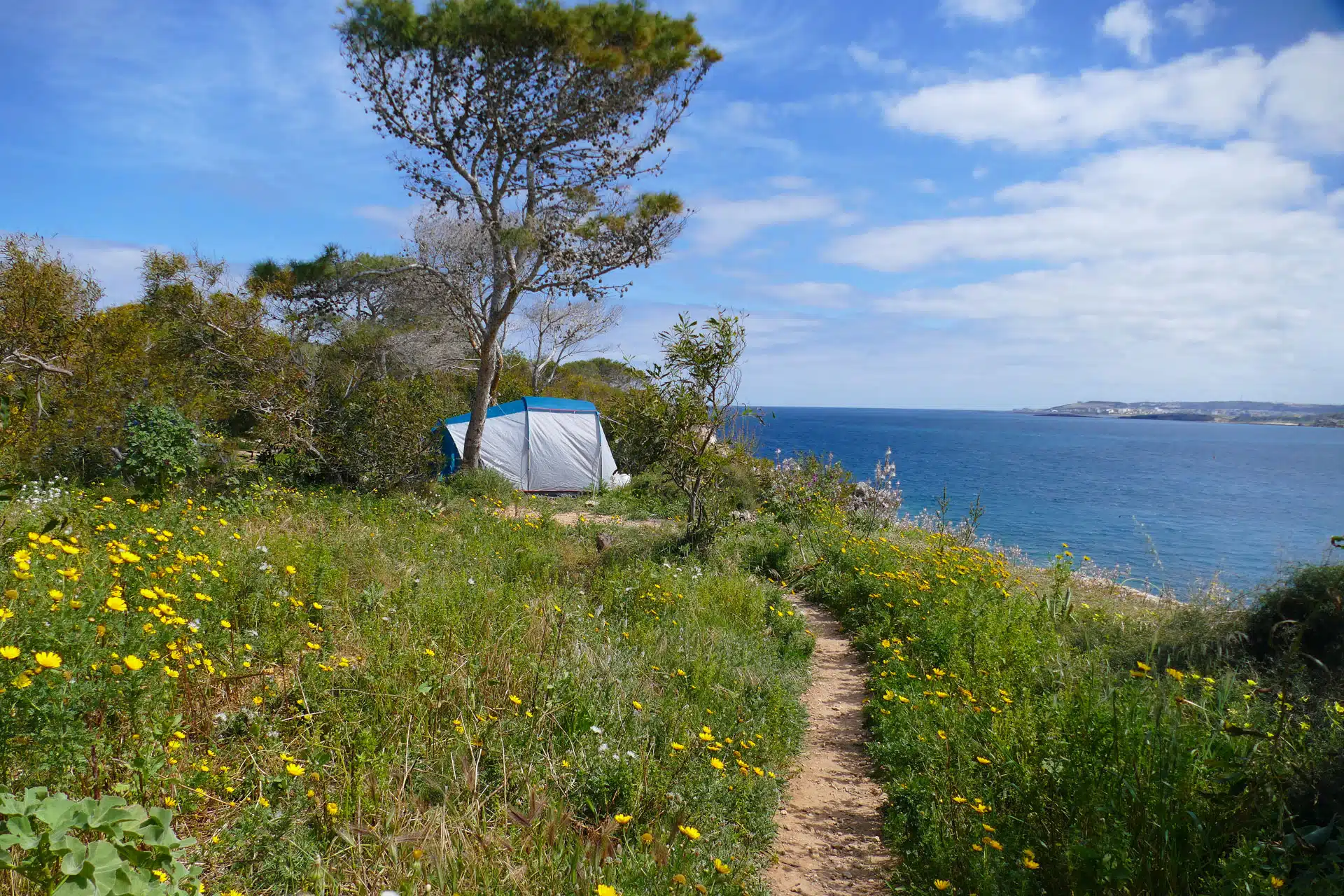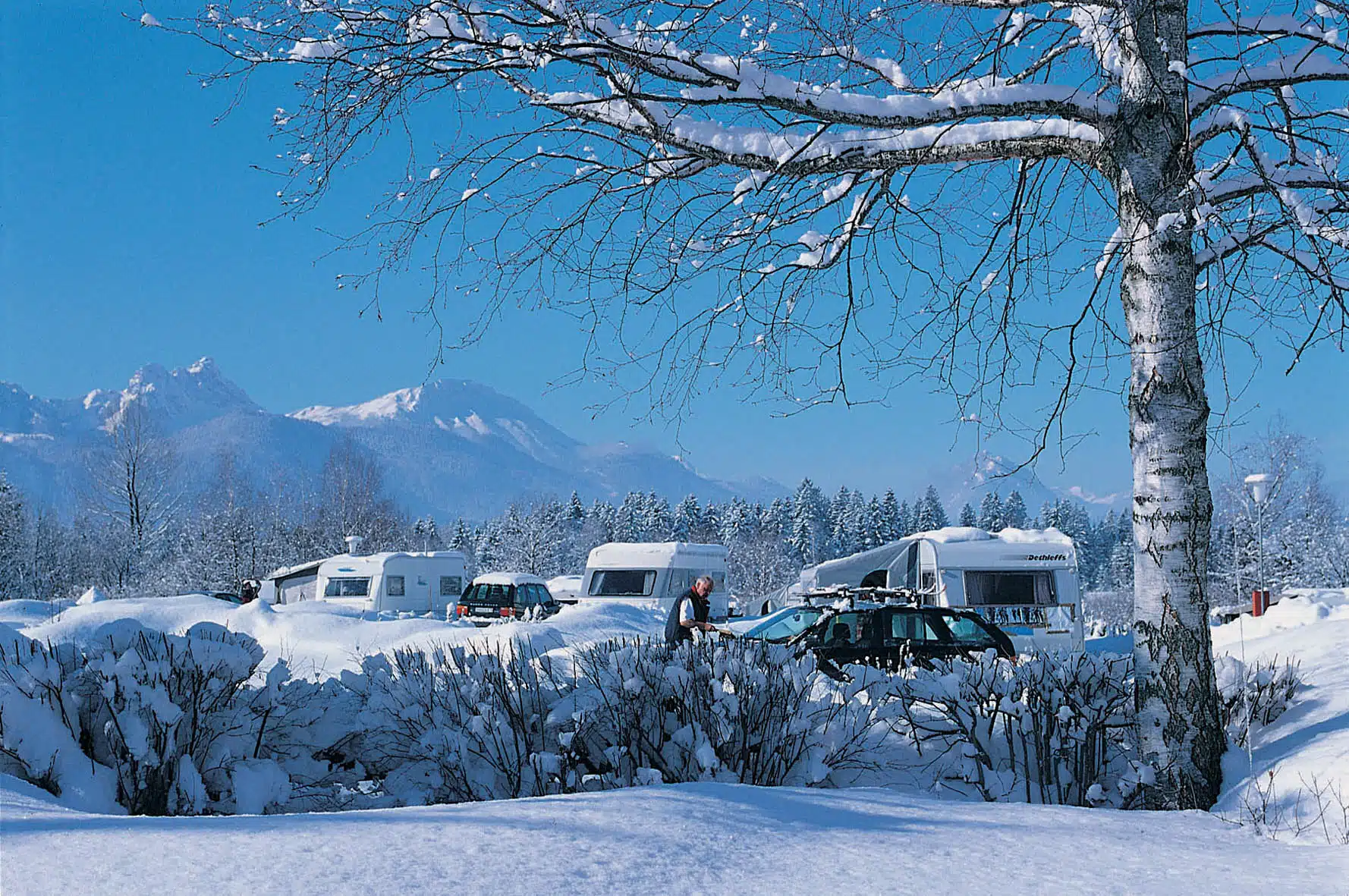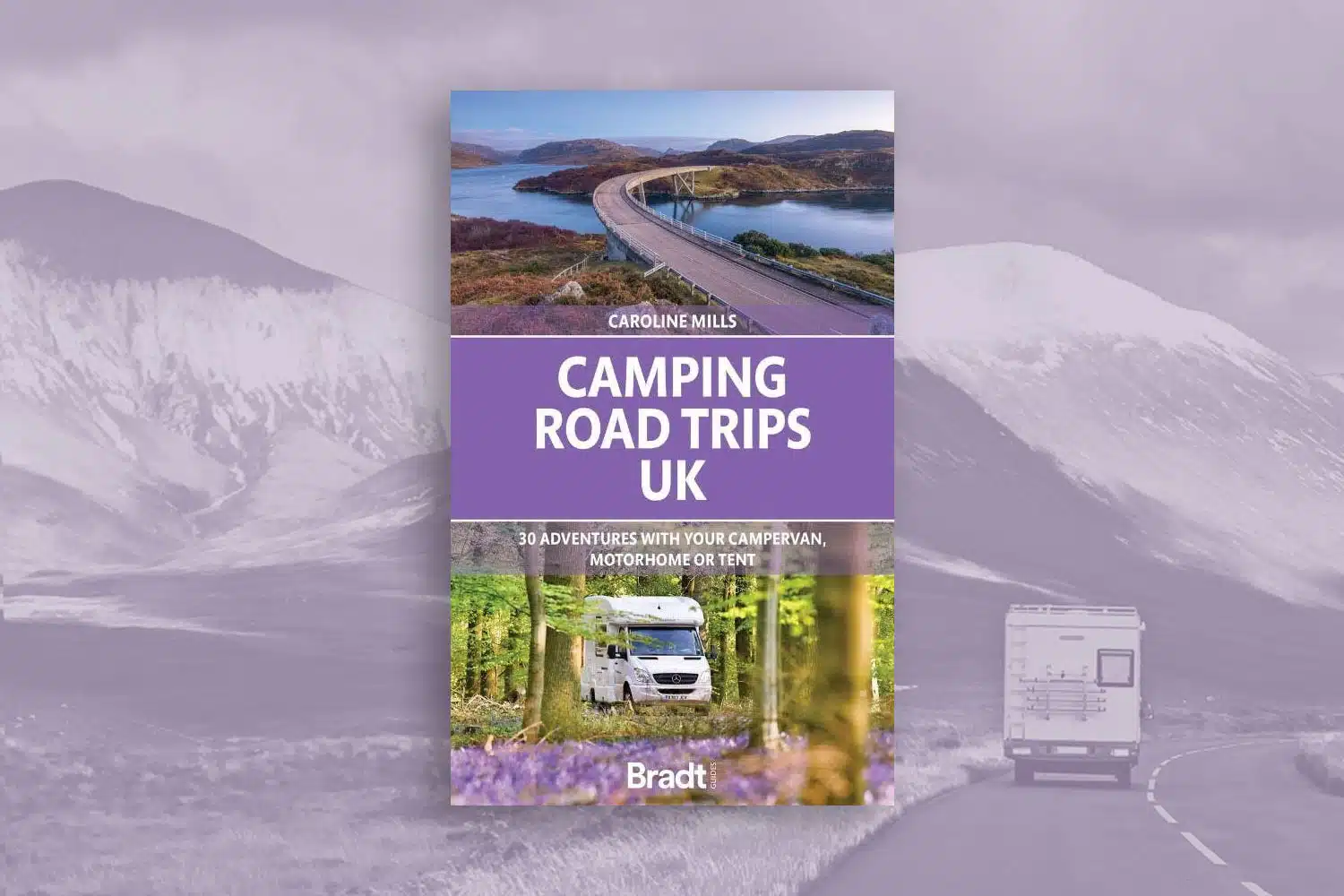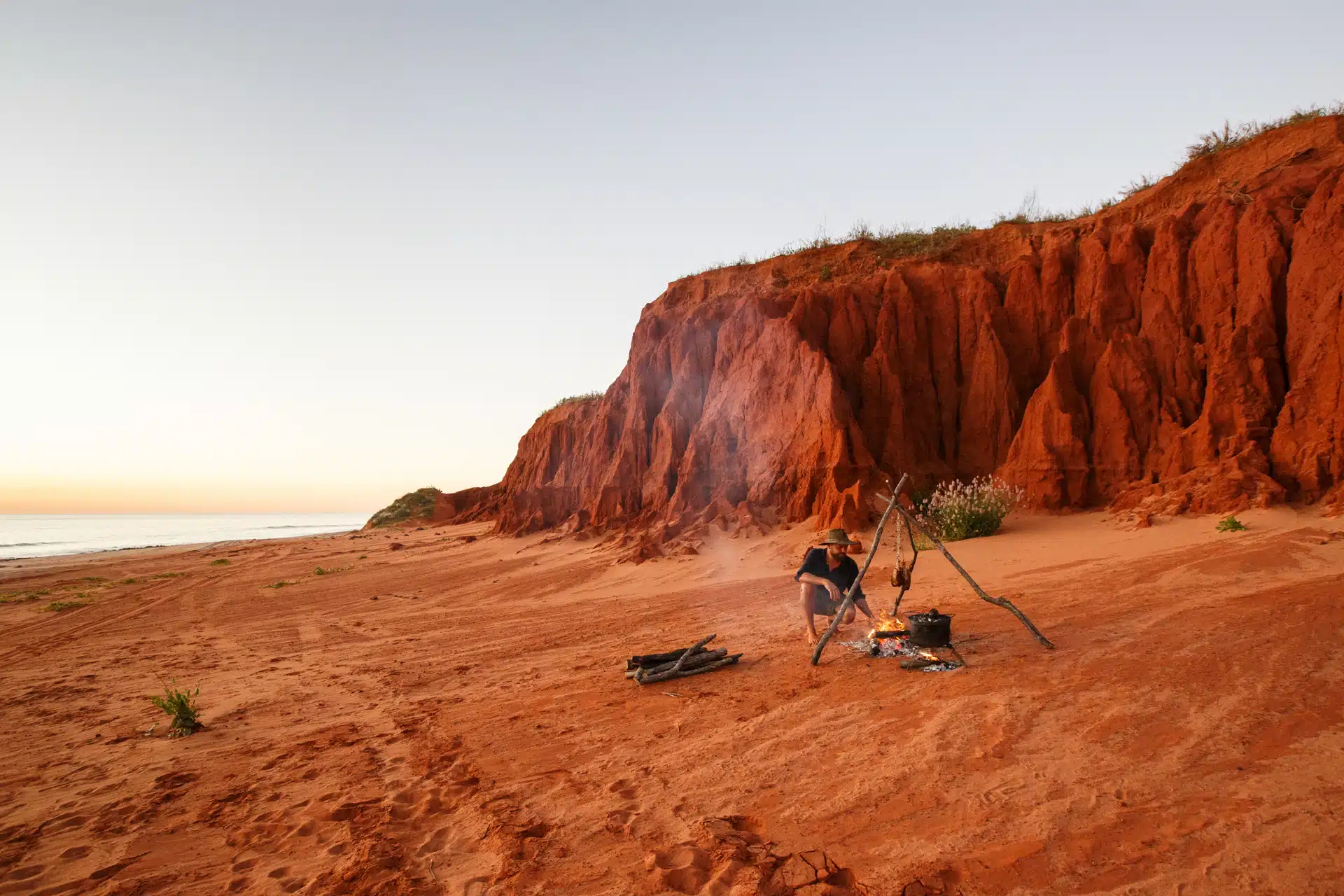It’s so long ago now that it’s a challenge to comprehend. But it was 1900 years ago, in AD122, that Roman emperor Hadrian built his wall across northern England, fixing the northernmost frontier of the Roman Empire for almost 300 years.
The remains of the 74-mile stone boundary between Wallsend, in the east, and Bowness-on-Solway, to the west, became a UNESCO World Heritage Site in 1987. This year sees the 1900 Festival, a celebration of the wall’s creation with hundreds of events and activities taking place throughout the year.
These include walks and talks, photography exhibitions and competitions, dark sky nights, Roman family adventures, walking festivals, creative writing workshops, historical re-enactments, archaeological digs, and even the creation of a special Roman-themed beer to mark the occasion.
Events take place across Northumberland and beyond to Newcastle and Cumbria, along the full length of the wall.
What else is there to see in Northumberland?
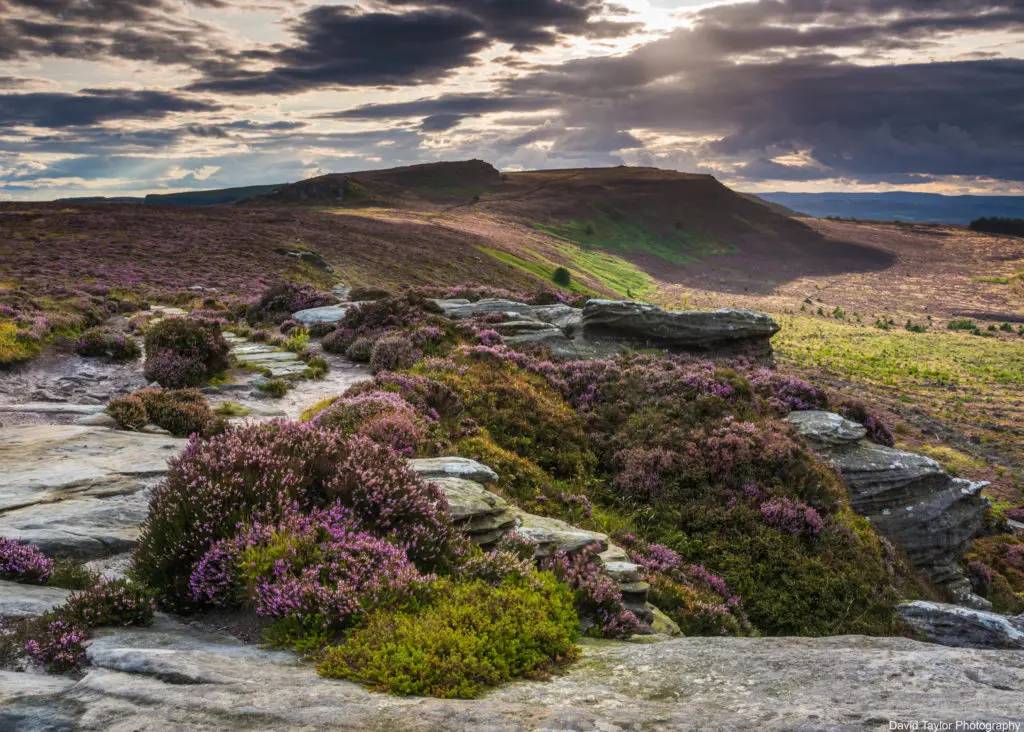
©VisitBritain/David Taylor Photography
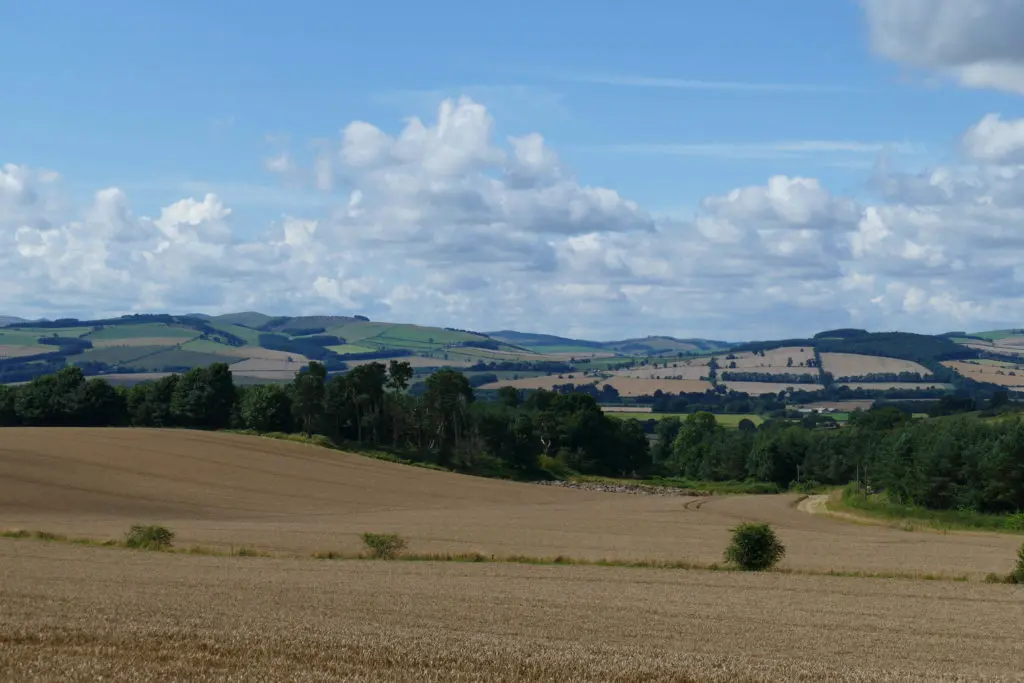
Cheviot Hills and Northumberland National Park
Northumberland National Park offers some of the most refreshingly remote landscapes in England – and all the more beautiful for it. Arguably, the most striking scenery within the Park is that of the Cheviot Hills, which straddle the border between England and Scotland.
This range of rounded, rolling hills provides plenty for the cyclist and walker, including tackling the summit of The Cheviot, Northumberland’s highest point. But there are handsome, low-lying easy trails to experience the beauty of the Cheviots, spot wildlife, enjoy waterfalls and tiny burns. A must-see is the stunning College Valley, with numerous hillforts, ancient woodlands and charming villages.
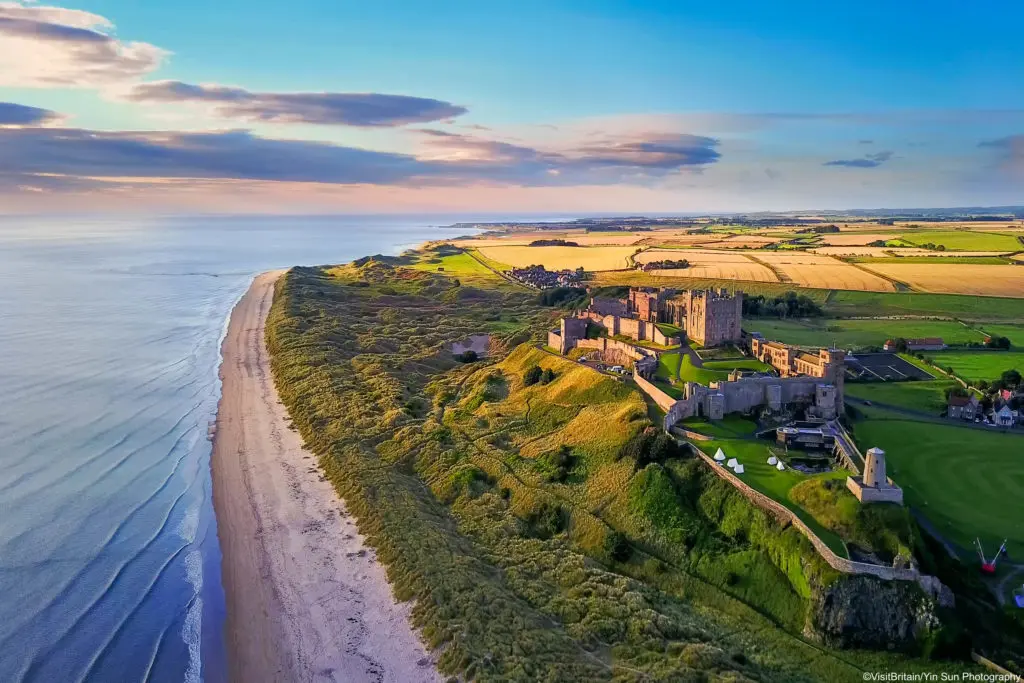
©VisitBritain/Yin Sun Photography
Bamburgh Castle
Northumberland has many castles and historic buildings to cast an eye over, including Alnwick, renowned for its gardens (and the second largest inhabited castle in the UK), Warkworth and Dunstanbergh, for its position on a wild headland.
But the coastal castle that tops all is Bamburgh, an 11th-century fortress that dominates the Northumbrian coastline. Bamburgh has seen battles amongst Anglo-Saxons, Normans and the Wars of the Roses. Today it is a family home (having been in the same family since 1894) and houses a large collection of art, ceramics, and armoury. There are numerous events for all the family throughout the year.
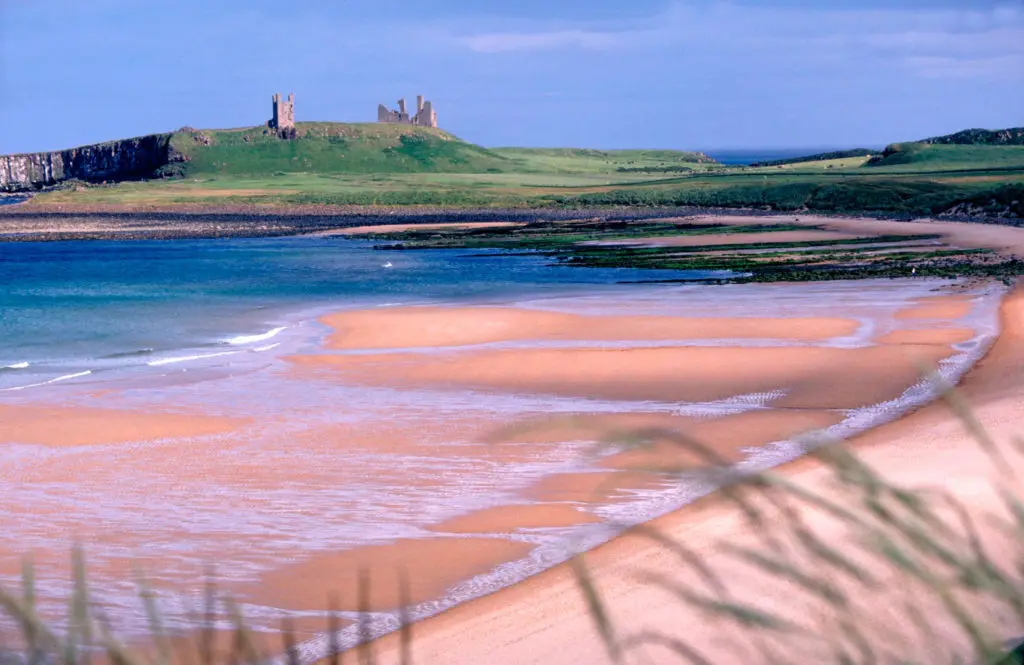
Embleton Bay overlooked by Dunstanburgh Castle
© Visit Northumberland
Beaches
Northumberland is renowned for its collection of long, sandy beaches, making them quiet and restful places to enjoy summer sun. Many are within the Northumberland Coast Area of Outstanding Natural Beauty.
The most popular include Bamburgh Beach (beneath the castle) and Beadnell Bay, with its crescent-shaped beach and sand dunes behind. It’s possible to launch boats at Beadnell.
For something a little more off-the-beaten track, you’ll love East Chevington Bay Beach, Druridge Bay Beach, Longhoughton Beach and Embleton Bay, overlooked by Dunstanburgh Castle. The Northumberland Coast Path links all these beaches and helps to reach those out-of-the-way places, making them even more special.
For one of the best beaches that’s truly out-of-the-way, you can’t beat Ross Back Sands. It requires a 1.5-mile walk from the nearest road. But, if you’re staying on the Wild With Consent site at Elwick, it’s easy-peasy to reach on foot.
Ford and Etal Estates
Two easy inland villages to visit, both of which should be on a must-see list, are Ford and Etal. They’re both very different in character, but belong to the same large, working estate.
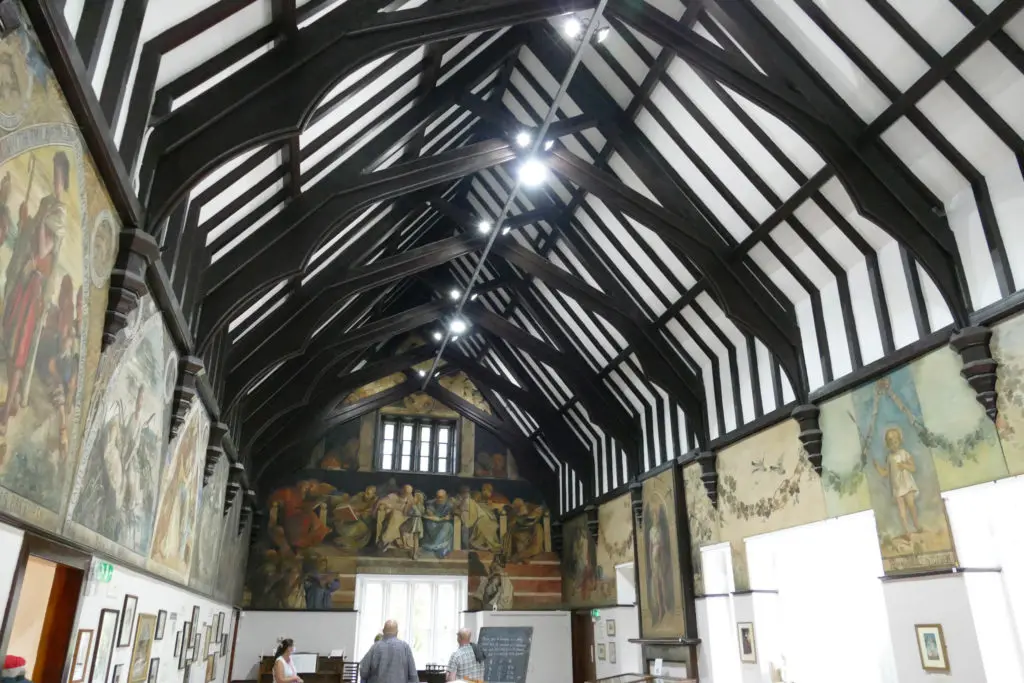
Ford is made up of a series of stone villas, with a village green, a Medieval castle and attractive church with views. The highlight is Lady Waterford Hall, its interior walls painted with Pre-Raphaelite murals.
Etal, meanwhile, contrasts with a ribbon of white cottages that lead towards the stone ruins of Etal Castle, and the only thatched pub (The Black Bull) in Northumberland. The River Till affords the opportunity for a peaceful riverside walk between the two villages; both offer an attractive tea-room apiece.
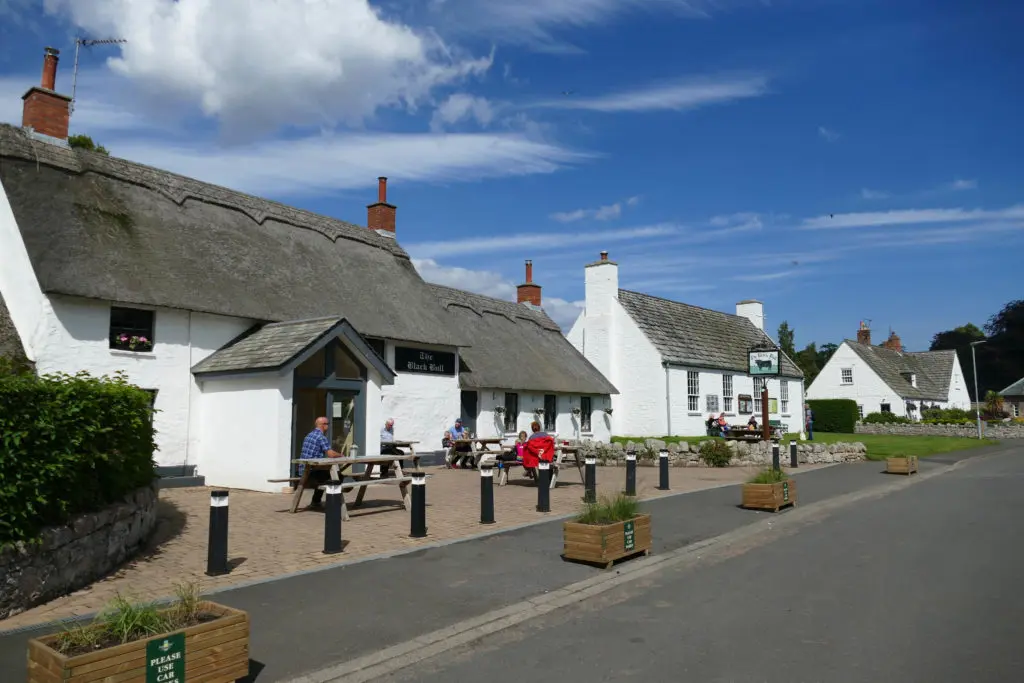
Close by (and within the estate) is Ford Moss Nature Reserve. It’s a lowland peat bog that was a one-time, long-forgotten, mining landscape. Today, it’s gorse, heather, rock roses and bracken that surround the rich lowland habitat, and with magnificent views over the Cheviots.
Rivers
Not necessarily a sole reason why you would visit Northumberland, but the county’s rivers offer solace, incredible scenery, and some magnificent walks.
Take Coquetdale, to the west of Rothbury and lying within the national park. The River Coquet is diminutive in size, but the scenery through which it flows – heather moorland, rocky outcrops and beautiful hay meadows – is vast in scale and beauty.
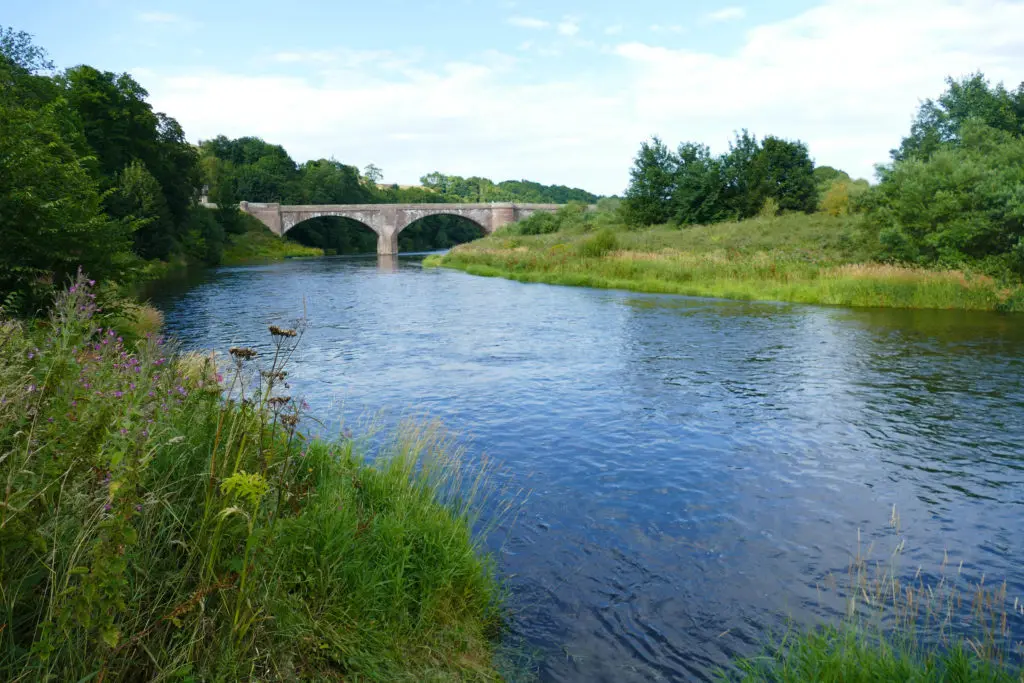
Further north is the North Tyne and Redesdale, full of rivers, burns and waterfalls, all set within wild moorland, scattered villages and ancient woodland. A pretty walk that’s suitable for all the family is the Falstone Circular Walk, with two miles of riverbanks to explore.
Perhaps the finest to wander alongside, or attempt to catch salmon, is the border river, the Tweed. It flows out to sea at the historic border town of Berwick-upon-Tweed. Further inland, there are idyllic stretches to walk alongside, including at the pretty village of Norham. Norham Castle, which overlooks the Tweed, was often painted, fondly, by landscape artist JMW Turner.
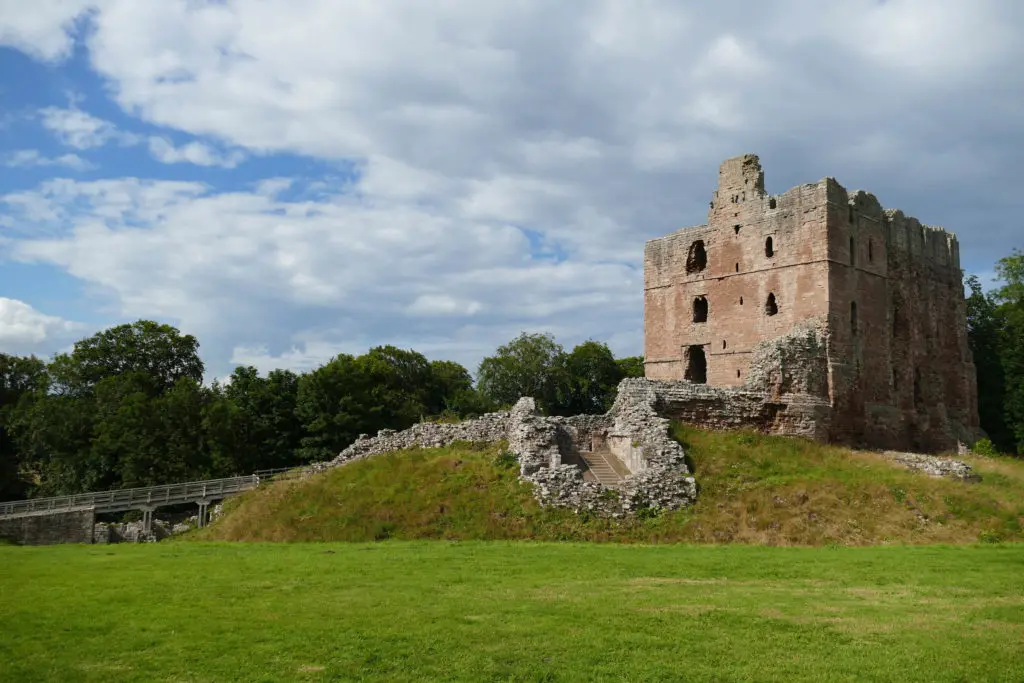
Battlegrounds
As a border county, Northumbria has been fought over for centuries (hence Hadrian’s Wall). It has seen some of the bloodiest and most tragic battles in British history.
These include Vikings storming the Holy Island of Lindisfarne, in 793 and, more recently, the Battle of Otterburn in 1388 and the Battle of Flodden, which claimed the life of Scottish King James IV in 1533. A memorial site at Flodden, near the village of Branxton, offers an explanation of the atrocities of the one-day onslaught. It’s also within walking/cycling distance of the Wild With Consent site at West Learmouth.
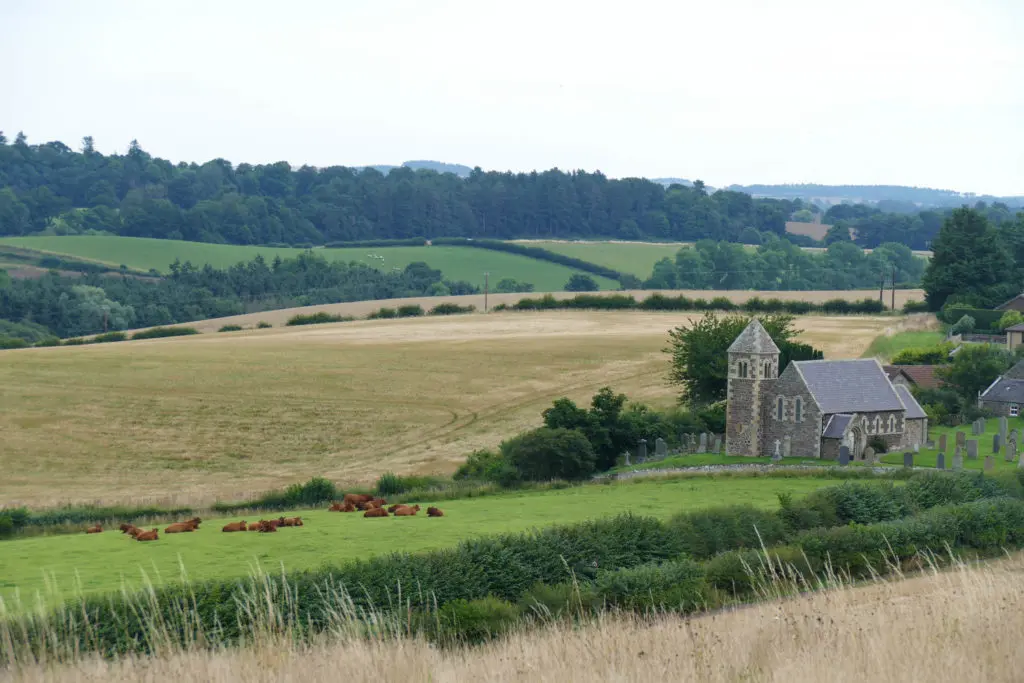
Holy Island
Such is the popularity of Holy Island that, in most cases with popular tourist attractions, we’d say that it pays to get there early. That’s not necessarily the case here! Keeping a keen eye on the causeway crossing times to get across to the island – and back again – safety is paramount.
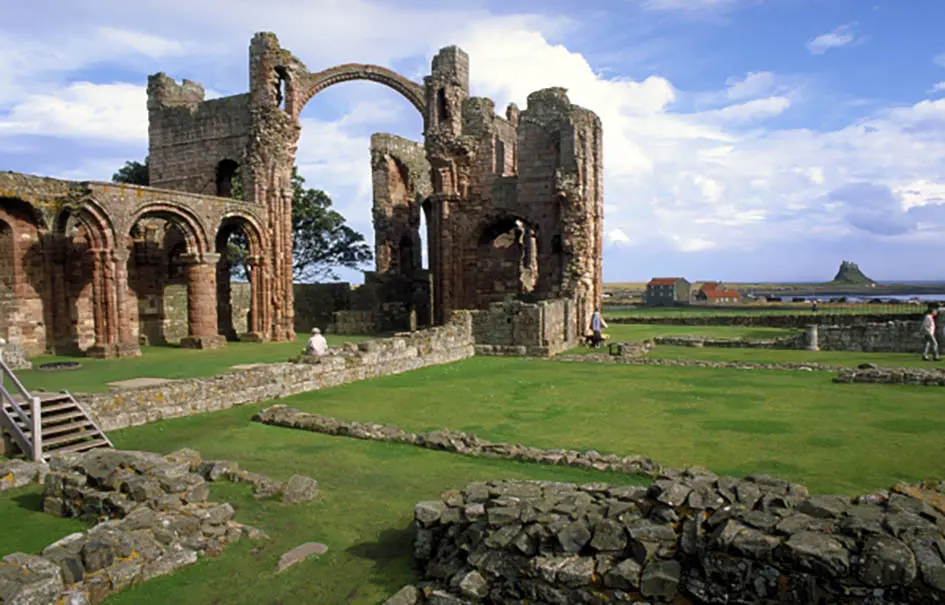
© Visit Northumberland
Most visitors while away a morning in the island village or a visit to Lindisfarne Castle. The 16th-Century building, which was occupied by Parliamentary forces during the English Civil War, was converted into an Edwardian holiday home by the prestigious architect Sir Edwin Lutyens. Also in the village is the ruins of Lindisfarne Priory, where you can find out about St Cuthbert (patron saint of Northumberland) and the Lindisfarne Gospels. The castle and priory are managed by the National Trust and English Heritage respectively.
Head away from the village on foot, though, and you’ll find you all but have the island and the Lindisfarne National Nature Reserve to yourself. It’s a wildly beautiful sea-level landscape of sand dunes, silent bays and enough flora and fauna to satisfy anyone’s craving for nature including a selection of seabirds along the shore.
The wild way to stay in Northumberland
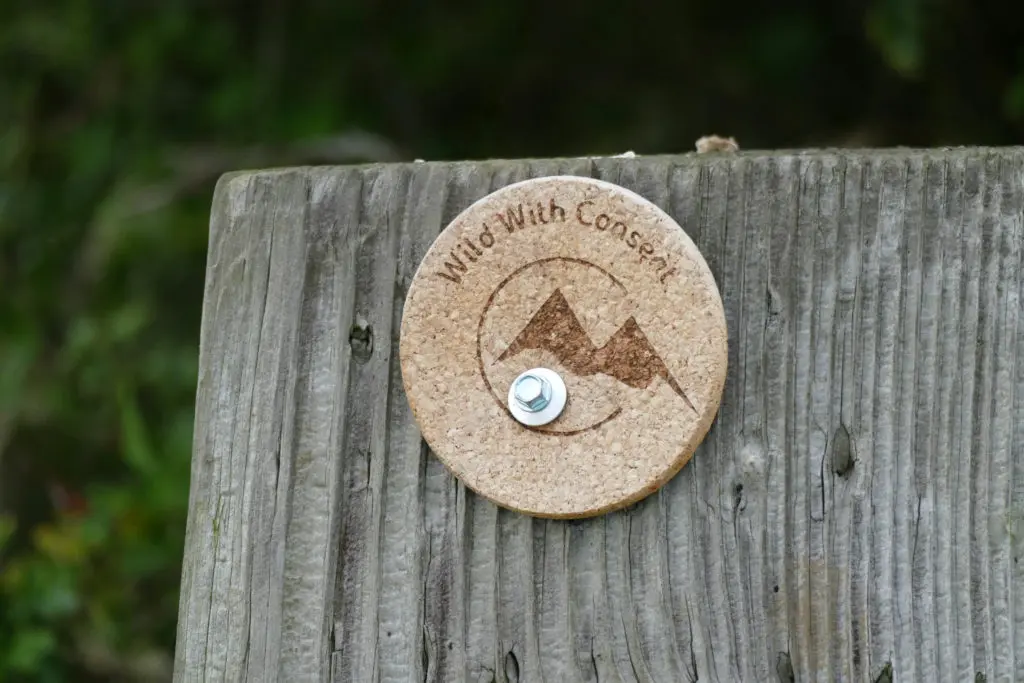
Wild With Consent connects motorcaravanners and campervanners with private landowners in Northumberland and beyond. The scheme offers exclusive off-the-beaten track locations, where motorhomes and campervans (no touring caravans or tents) may pitch up in natural and often wild surroundings. With only one pitch available per location, you will always have exclusive use. Each site is only available for a maximum of 28 days per year between May and October. Guests may stay for no more than one night.
Visitors book online via the Wild With Consent website; directions to the site will be sent prior to arrival. There are currently 18 sites from which to choose (10 in Northumberland with others in Hampshire, the Cotswolds, North Weald, Yorkshire and Scotland). Each one costs between £25 and £75 for exclusive use. Arrival time is from 1pm and departure time by 12 noon. As sites are in wild locations, visitors must follow a Leave Only Footprints Code of Conduct and adhere to the Countryside Code.
Do check the details on the website about the suitability of each site for the size of your vehicle; some sites are only suitable for small campervans with a maximum length of 5 metres. Other sites can manage larger vehicles and even RVs.
I love camping off-grid; it’s what I do most when touring throughout Continental Europe, so to have opportunities to do so in England adds another dimension to the types of sites to stay. Both sites that I stayed at, in West Learmouth and Elwick, provided tranquillity and an element of wild camping.
Here is a selection of some of the best Wild With Consent sites in Northumberland to choose from, and to get a flavour of what to expect:
Shellacres
Take breakfast on the banks of the River Till before heading off on foot for a stroll along the beautiful River Tweed. Licensed fishermen have the bonus of access to the river for angling. Access is via a stone farm track, with the site suitable for campervans and coachbuilts up to 8m in length. The parkland setting, with surrounding woodland, is idyllic.
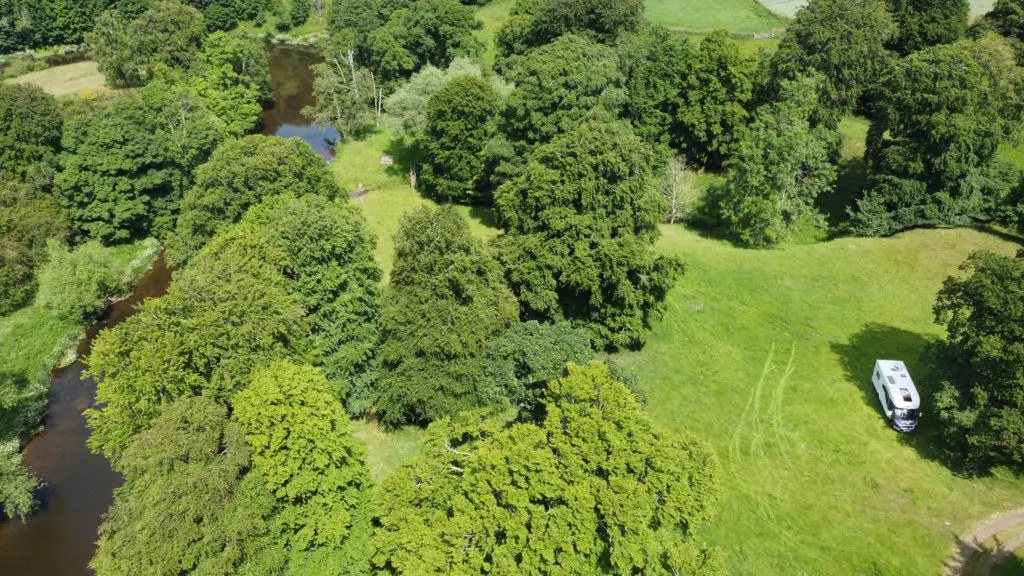
Elwick
This gorgeous site is within 100 yards of the Lindisfarne National Nature Reserve, which is sublimely peaceful. There are views from your pitch across Ross Bay to Holy Island and Lindisfarne Castle. There’s lots of room for manoeuvring; the site is suitable for coachbuilt motorhomes up to 8m in length.
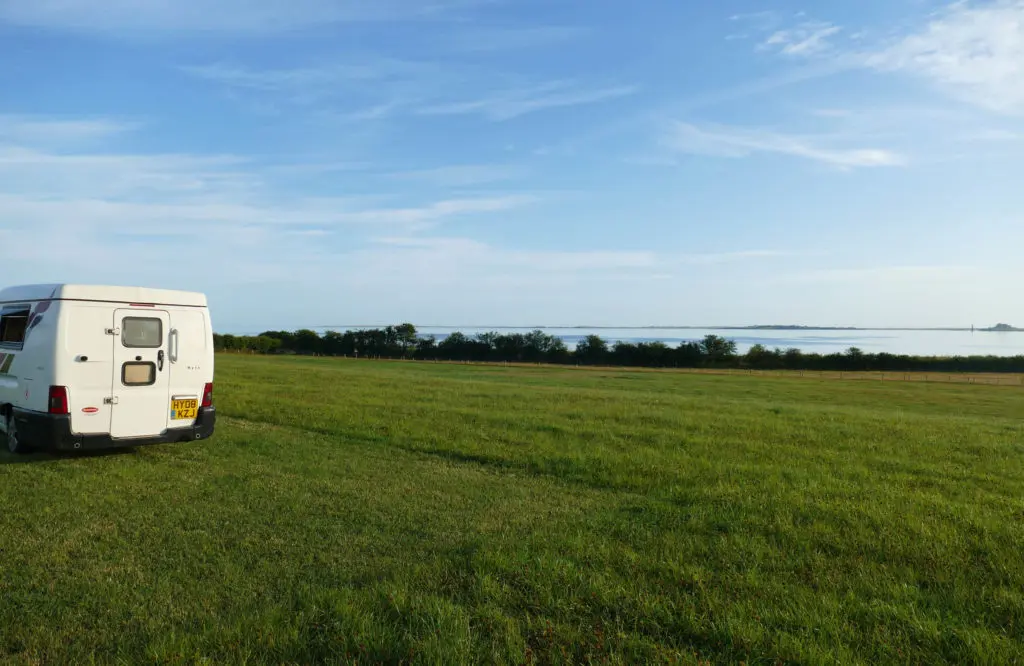
Scremerston Town Farm
Guests staying at Scremerston Town Farm really are spoilt for sea views from the private pitch here, with tantalising panoramas of the Northumberland coast. The site is conveniently positioned not far from the A1 (though far enough away to lose traffic noise) and pretty Berwick-upon-Tweed; it is accessed via a farm track and is suitable for coachbuilt motorhomes up to 8m in length. Caroline, the host, will cook breakfast, dinner or cake if requested in advance.
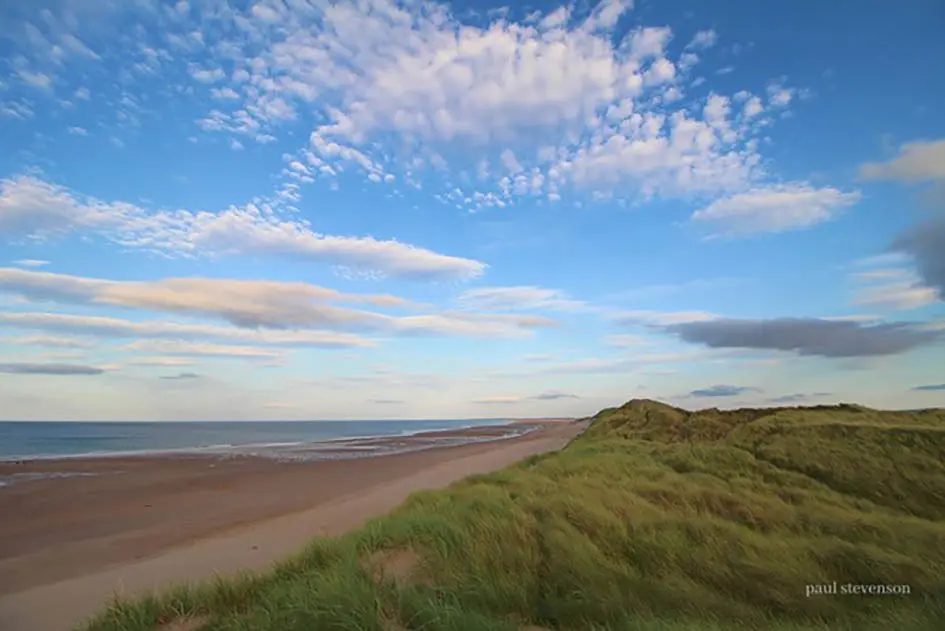
© Paul Stevenson
Lanton
At the foothills of the Cheviots, and within a few minutes cycle ride of Northumberland National Park, Lanton offers a riverside setting but within proximity to the A697, making it a useful stop off for heading between Scotland and Northumberland.
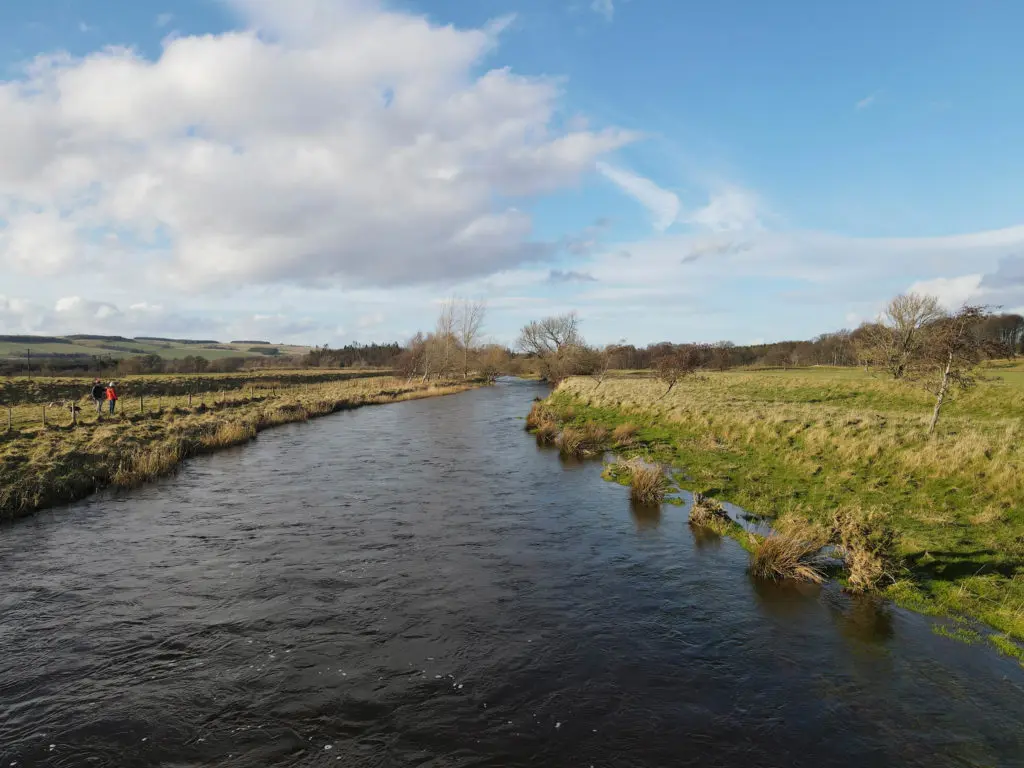
Note that access to the wild camping pitch is along a grass track and is therefore only suitable for smaller, lighter-weight campervans. You might wish to sit your wheels on wheel-grip mats if a night’s rain is forecast.
Greymare Farm
In woodland and pasture between the pretty villages of Belford and Lowick sits Greymare Farm. Here guests can admire the hilltop views over the Northumbrian coast and Lindisfarne while toasting a marshmallow on the available firepit.
Access is direct onto the grass pitch, off a Tarmac single-track quiet country lane (which only leads to Greymare Farm). The site is close to St Cuthbert’s Way, a long-distance footpath from Melrose, in the Scottish Borders, to Holy Island.
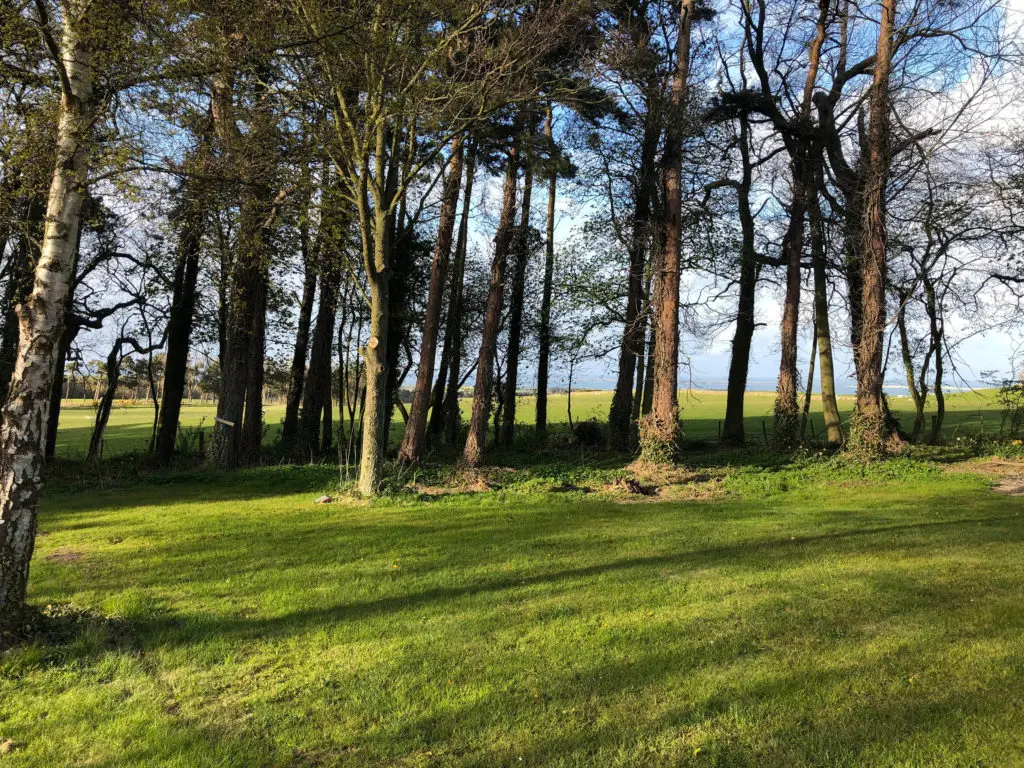
West Learmouth
Listen to the bubbling burn from your pitch in this nature valley – but be sure to climb the hill for beautiful views over the surrounding hills and farmland. You’re likely to encounter lots of wildlife during your stay, including brown hares, buzzards, and deer.
Note that there is a tight turn into the site from the single-track (but quiet) country lane and turning room beside the river is compact. Therefore, this site is only suitable for lightweight campervans less than 5.5 metres.
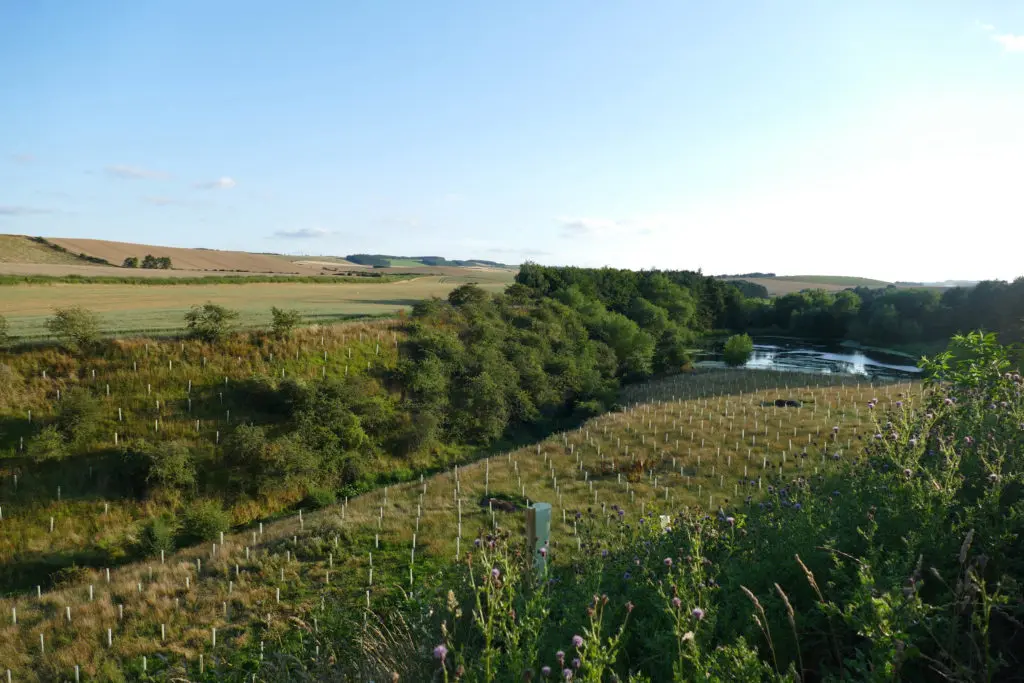
All images ©Caroline Mills unless otherwise specified
DISCOVER MORE
Wild With Consent
Northumberland Tourist Board
1900 Festival
https://www.1900.hadrianswallcountry.co.uk/
Northumberland National Park
www.northumberlandnationalpark.org.uk

